- News
- Reviews
- Bikes
- Accessories
- Accessories - misc
- Computer mounts
- Bags
- Bar ends
- Bike bags & cases
- Bottle cages
- Bottles
- Cameras
- Car racks
- Child seats
- Computers
- Glasses
- GPS units
- Helmets
- Lights - front
- Lights - rear
- Lights - sets
- Locks
- Mirrors
- Mudguards
- Racks
- Pumps & CO2 inflators
- Puncture kits
- Reflectives
- Smart watches
- Stands and racks
- Trailers
- Clothing
- Components
- Bar tape & grips
- Bottom brackets
- Brake & gear cables
- Brake & STI levers
- Brake pads & spares
- Brakes
- Cassettes & freewheels
- Chains
- Chainsets & chainrings
- Derailleurs - front
- Derailleurs - rear
- Forks
- Gear levers & shifters
- Groupsets
- Handlebars & extensions
- Headsets
- Hubs
- Inner tubes
- Pedals
- Quick releases & skewers
- Saddles
- Seatposts
- Stems
- Wheels
- Tyres
- Health, fitness and nutrition
- Tools and workshop
- Miscellaneous
- Tubeless valves
- Buyers Guides
- Features
- Forum
- Recommends
- Podcast
feature
 Rondo Ruut CF-5.jpg
Rondo Ruut CF-5.jpgTech Trend: Is adjustable geometry the next big thing for gravel bikes?
Is adjustable geometry the next tech thing to get your head around? Until now geometry adjustment has been the reserve of mountain bikers, but a few new gravel bikes launched recently are utilising adjustable geometry to tune the handling for different requirements. Let’s take a closer look at what this means for you.
Geometry is determined by the bike designer and is the result of wanting to offer a certain ride characteristic, whether it’s relaxed and stable like endurance or touring bikes, or quick and nimble like road racer or cyclocross bikes. Unless you go custom, you don’t really get much say in it, it’s decided for you. There have been some examples of geometry adjustment on road bikes though, Argon 18 has a novel head tube extension system for adjusting stack height, and some bikes have flippable seat posts for altering the effective seat angle.
- Cyclocross bikes v gravel/adventure bikes: what's the difference?
Otherwise, road bike geometry is a fairly settled thing, having been honed over many decades of development. The numbers between different models usually only vary by a small amount. In comparison, gravel and adventure bikes are a lot more varied but generally, you can expect a gravel bike to be slacker, lower and longer for more stability on rough terrain.
Not all gravel is the same, and neither are the bikes. We’re seeing gravel largely being used as a catch-all term for everything from people going bikepacking or doing ultra-distance events like the Transcontinental Race, to people interested in the versatility for mixed road and off-road riding along with commuting applications, to cyclists who just want to escape congested roads and get lost in the woods. Then there are many gravel race events cropping up around the world.
Most manufacturers are trying to design bikes that either accommodate all these varied demands, or pick one particular stlye of gravel riding and focus on that. As a result of this huge variety, some manufacturers are looking into adjustable geometry as a way to ensure to allow the rider to tune the handling to suit their needs. Adaptability is certainly becoming a focus for some gravel bike designers and adjustable geometry is one way of offering this.
- Is a gravel/adventure bike all you need?
Let’s look at some examples
Trek’s Checkpoint gravel bike features sliding dropouts to provide adjustable wheelbase. The wheelbase can be changed from long and stable to short and lively, the former is better for long rides and bikepacking, the latter for gravel racing, according to Trek. It also offers the opportunity to ditch all the gears and go singlespeed.
“The new dimensions are comfortable over the long haul and on rough roads but remain aggressive enough to provide the speed and responsive ride-feel most gravel riders are looking for,” explained Trek at the launch of the Checkpoint.
Sliding dropouts is a neat idea, but what appears to be a growing trend is adjustable fork dropouts, and we have a few examples to talk about here. With adjustable fork dropouts, the idea is to alter the trail, which can have a noticeable impact on the handling.
What the trail?
As a reminder, trail is the distance between the centre of the wheel contact patch and an imaginary line drawn through the centre of the head tube to the ground. The distance between these two points is the trail, the wheel ‘trailing’ behind the steering axis.
Shorter trail results in more nimble and faster steering, longer produces more stable and relaxed handling. It helps to think of the differences between a road race bike and a touring bike. The former has a shorter trail for quick handling, the latter has a longer trail for less twitchy handling.
The trail can be adjusted by altering the fork offset, often called rake. Offset is the distance of the front axle to the steering axis, using that imaginary line drawn through the centre of the head tube again.
With that all cleared up, let’s look at some examples
GT revamped its popular Grade adventure bike with a flippable chip in the carbon fork dropout. The two positions change the offset from a regular 55mm to a longer 70mm. The 55mm offset produces a 57mm trail, the longer 70mm offset shortens the trail to 39mm.
The idea is that the shorter trail results in more nimble and faster steering and can be used to counteract the effect of heavy bikepacking bags, while the longer trail is used for general gravel riding and racing without luggage.
GT hopes the Flip Chip will allow the new Grade to cater for the different demands of fast gravel riding and fully loaded bikepacking. “Run the 55 mm offset for gravel races or flip to the “low- trail” 70 mm offset when you’re loaded up with cargo on a bikepacking adventure,” it says.
Polish company Rondo offers variable geometry on several of its bikes with adjustable fork dropouts. Called Twintip, an adjustable fork dropout lets you choose a lower and steeper set up for racing and fast riding or a higher and more relaxed stance for adventure, exploring and bikepacking. It lets you adjust not only the handling but also the ride position.
“The Ruut range was born from the need to have a REALLY versatile bike. One that would be comfortable enough for backpacking and long-distance riding, but at the same time would retain a clearly sporty character. At Rondo we are all competitive guys - we ride fast, we race - but we don't need a bike for the CX World's. What we want from a drop-bar bike is to be able to go long, and go fast, especially on rough roads. So, after over two years of development, we came up with a tool that we believe is the ultimate solution for real-world riders,” explains Rondo of its variable geometry design.
Providing adjustable geometry via a fork dropout change requires investment from the bike manufacturer. Step forward fork supplier Columbus. It has developed the Futura Cross Fork with a flip chip to adjust the fork offset between 47 and 52mm. Nearly all carbon gravel forks come with the same 47mm offset.
“The innovative multi-rake system provides frame designers with more freedom when it comes to geometry and trail, and an adjustable set-up based on use and choice of tyres ensures riders will find the perfect fit,” says Columbus.
The impact this has on the trail will depend on the head angle of the frame it’s fitted to. So far the only brand we’ve seen to spec the fork is UK company Kinesis Bikes. It has fitted the new fork to it latest Tripster AT adventure bike. The adjustable fork is intended to allow you to increase the stability for bikepacking and touring or liven it up for gravel riding exploits.
What’s the right trail for me?
That will depend on your style of riding, the terrain you’re riding over, and the size of your wheels and the volume of your tyres. It’s this difference in the wheel and tyre size that has prompted Cervelo to introduce its TrailMixer solution on its brand new Aspero gravel bike.
The TrailMixer is an adjustable fork dropout that changes the offset by 5mm and is intended to maintain a 62mm trail regardless of wheelsize.
In the forward position, the trail is shorter and designed for 650b wheels. The rearward position increases the trail for 700c wheels. Cervelo has even developed three forks to ensure the right fork offset across the size range.
It’s intended to maintain the desired handling with any wheelsize on any size frame. What Cervelo has done is try to minimise the impact on handling and steering that changing between different wheel sizes and tyre widths have. Cervelo has a target handling trait and the adjustable flip-chip lets you ensure that no matter what wheels and tyres you’re riding, you’re getting the handling that Cervelo intended for the bike.
“Now athletes can choose the fastest wheel/tire combination for the day’s conditions and never sacrifice essential high-speed control, allowing them to push for their personal best,” explains Cervelo.
Do we need adjustable geometry?
Is user-adjustable geometry a good or bad thing? Is it a fad during the formative and uncertain early years of gravel bike development, or a tech feature we’re set to see more off? Is this just the start of a wider push towards greater geometry adjustment, or will it be confined to relatively small fork offset changes?
They are all good questions and ones that can only really be answered with extensive testing of the bikes mentioned above, which is something we’ll be looking at in the coming months.
With gravel bikes now having to accommodate such a breadth of wheel size and tyre volume sizes, and the impact such a change can have on the handling of a bike, being able to adjust the geometry as a way to mitigate the changes introduced when swapping from fat 650b tyres to skinny 700c wheels does appear to make some sense.
So a shorter trail for smaller wheels and big-volume tyres, longer trail for narrow 700c gravel tyres. Or, as GT hopes, to counteract the impact lots of heavy bikepacking luggage has on the handling. Adjustable geometry could also be used by a rider to fine-tune the handling to suit the terrain or their riding style, so if you prefer quick or slow steering, you have the choice.
These geometry adjustments aren’t trailside tasks, more a job to be done at home before you head out into the wilderness. We can certainly see some brands challenging that though and maybe producing adjustable geometry that can be done almost on the fly.
There’s a lot of talk about gravel bikes being able to take the place of two or three regular bikes with a change of tyres, but could adjustable geometry go a step further in really seeing a modern gravel bike become the only bike you need and able to switch to a different style of riding at the flick of a fork dropout insert?
What do you think of adjustable geometry? We’d love yo hear your thoughts on the subject in the comments section below.
David worked on the road.cc tech team from 2012-2020. Previously he was editor of Bikemagic.com and before that staff writer at RCUK. He's a seasoned cyclist of all disciplines, from road to mountain biking, touring to cyclo-cross, he only wishes he had time to ride them all. He's mildly competitive, though he'll never admit it, and is a frequent road racer but is too lazy to do really well. He currently resides in the Cotswolds, and you can now find him over on his own YouTube channel David Arthur - Just Ride Bikes.
Latest Comments
- anke2 1 sec ago
Check their website. These "inventors" run a social media agency and seem to make most (startup) money from a business selling pictures/movies of...
- quiff 6 min 4 sec ago
Wasn't taking it as a dig. Just thought that the formulation "if you slow down to the speed limit you'll notice how many people are speeding"...
- mdavidford 7 min 8 sec ago
You said you agree with Councillor Bates, whose case is that there is £80k of active travel budget for Dyffryn Ceiriog and no active travel...
- grumpyoldcyclist 35 min 16 sec ago
Sorry this is not the fault of the police, this is the driver after 'revenge'. He may be prosecuted for dangerous driving so he is out to get his...
- Shreds 39 min 43 sec ago
Another new place recently discovered is Wingfield Station cafe (no longer a station) in Derbyshire. ( Holm Lane South Wingfield, Holme Ln, South...
- E6toSE3 40 min 21 sec ago
One for shopping list. Need a new rear light. Varia and Magicshine have been the two options, this makes it 3....
- Shreds 1 hour 9 min ago
Another vote for Mercian here. They did a frame for me years ago. Superb job. ...
- Ihatepigeons 1 hour 14 min ago
I'll stick to Sainsburys own brand jelly beans thanks.
- Mr Blackbird 1 hour 15 min ago
I would appreciate some advice....

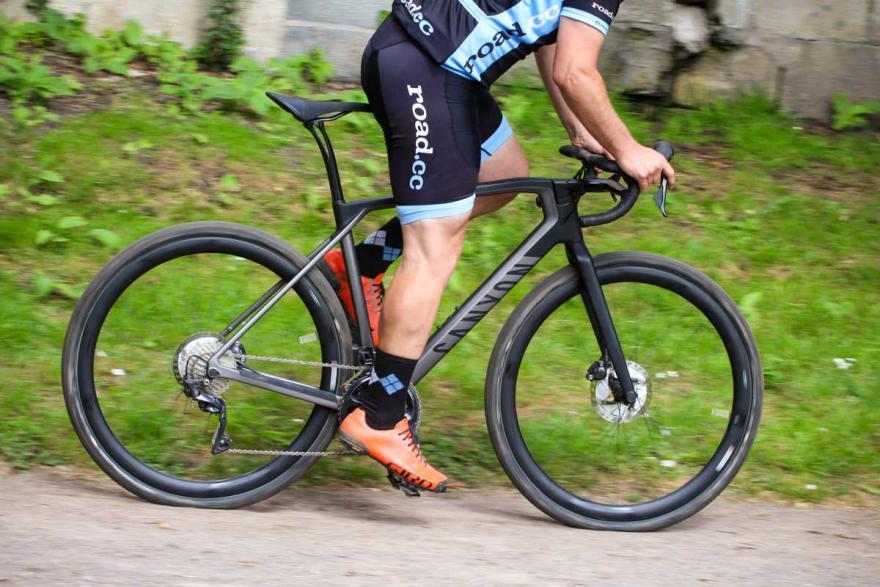
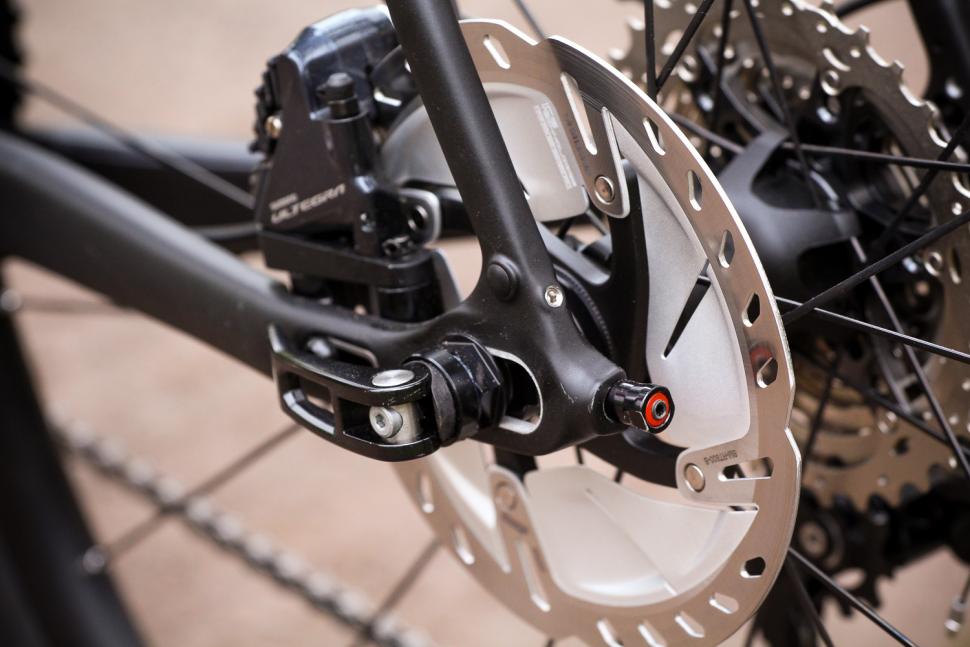


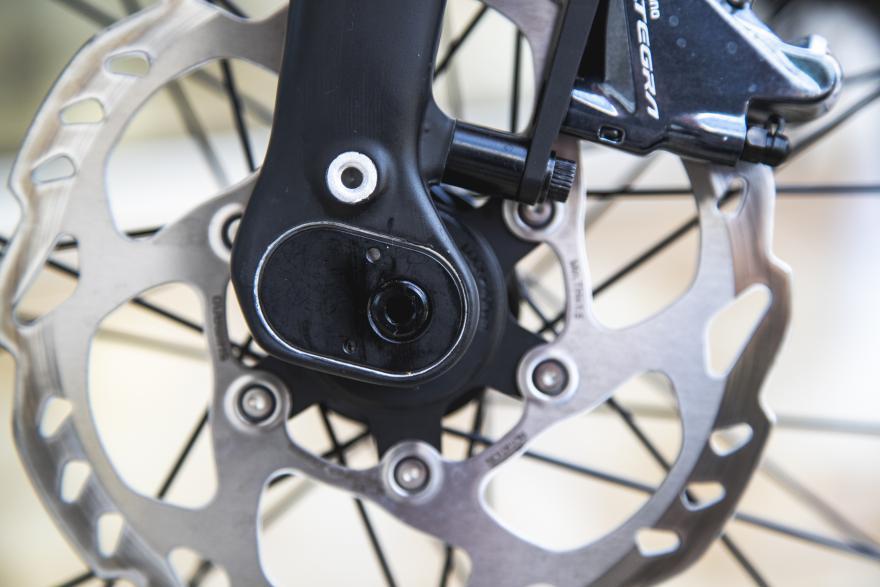
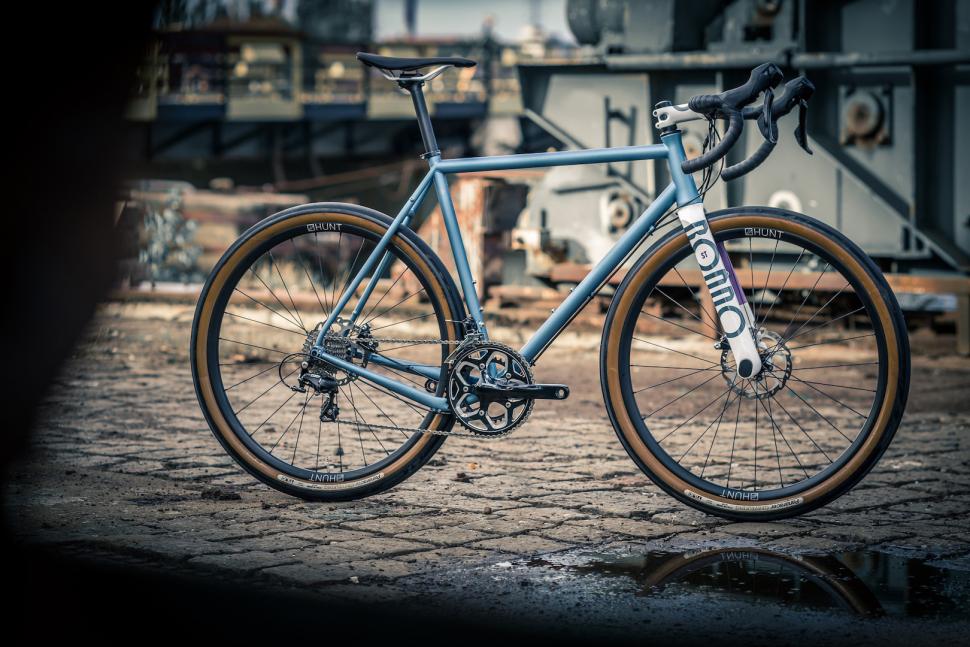



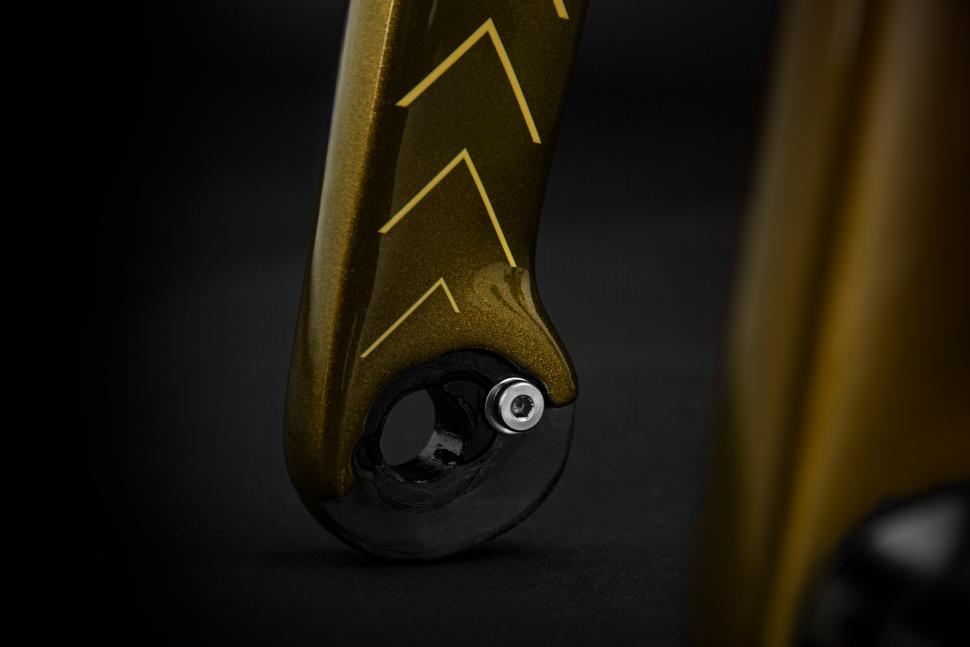

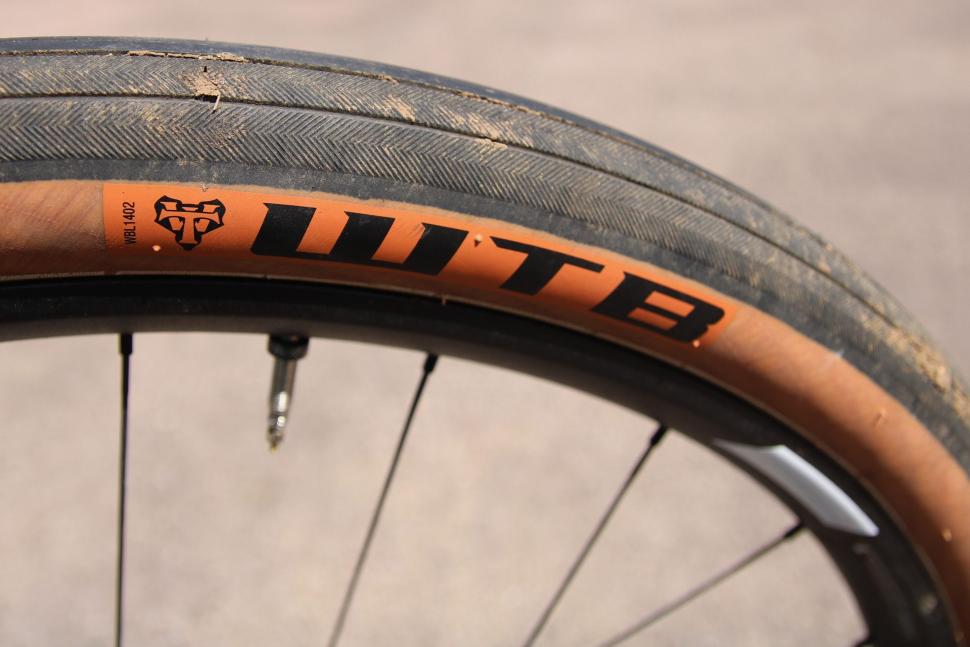
Add new comment
15 comments
> Sliding dropouts is a neat idea
Welcome to any steel bike made before the 1990s.
hite-rite?
orig dropper post.jpg
Would I be correct in assuming that you are not in your twenties.
Off topic, but the adjustable geometry I would like is to lower the saddle 10-15mm for descents and raise it again after, on the move, without using a 400g MTB-esque dropper post.
A rotary fitting below the saddle clamp should be doable within 100g.
Bikes are usefully more stable and faster downhill with a slghtly lower saddle ...
Take the newspaper you use to keep the chill off when descending and roll it up to stick twixt arse and saddle, cheap and, dare I say, elegant.
I guess it's reasonable to be sceptical of how big a difference it makes, but it will make a difference. I think it's a great idea.
Ahhhh, those Rondo forks are hideous
So, if you ride a GT, you need a long trail for nimble riding, and a short trail for loaded bikepacking.
If you ride a Rondo RUUT or a Kinesis AT, the opposite is true.
Obviously.
I suppose if you want to go around in circles you flip one chip only.
In the GT's case the idea is still to speed up the handling, but to compensate for the weight of luggage - in much the same way a designer of a heavy duty touring bike would do. It's doing the opposite of what you might expect because it's optimizing for heavily loaded rather than unloaded.
In the GT's case the idea is still to speed up the handling, but to compensate for the weight of luggage - in much the same way a designer of a heavy duty touring bike would do. It's doing the opposite of what you might expect because it's optimizing for heavily loaded rather than unloaded.[/quote]
'... a road race bike and a touring bike. The former has a shorter trail for quick handling, the latter has a longer trail for less twitchy handling.'
GT: 'the shorter trail results in more nimble and faster steering and can be used to counteract the effect of heavy bikepacking bags, while the longer trail is used for general gravel riding and racing'.
I would have thought a loaded bikepacker would need to be more like a touring bike, with a long trail. How does a 'twitchy handling' shorter trail counteract the effect of a heavily loaded bike?
Rondo: 'steeper set up for racing and fast riding or a higher and more relaxed stance for adventure, exploring and bikepacking.' Seems to be the opposite of what the Grade is trying to achieve.
'Tripster AT... The adjustable fork is intended to allow you to increase the stability for bikepacking and touring or liven it up for gravel riding exploits.'
Again, as with the Ruut, stable for loaded touring, lively for unladen gravel riding.
I'm not sure who is right, but there does appear to be a degree of contradiction in these quotes.
I suppose if GT have made a bike that rides like a racer when its got a stove, sleeping kit and tent hanging off it, they should have called it the Grail.
I agree, it does appear contradictory. My point was that it's not some newfangled marketing nonsense created in service of the latest fad, it's an existing approach sometimes used in touring bikes. See https://www.cyclingabout.com/understanding-bicycle-frame-geometry/.
Generally, touring bikes are longer and slacker, but:
"Some randonneur, bikepacking or light touring bikes are designed with less trail than even a road race bike (sub-40mm). The idea is that a quicker steering speed is offset by the heavier steering input of a front load."
Rondo's approach is to change the character of the bike. GT's is to maintain the character of the bike when weighed down with luggage.
Thanks for that, I wasn't suggesting that adjustable geometry is a gimmick, just that there seemed to be different approaches to /explanations of its usefulness.
When I was a kid I bought a Condor , tubs and all, that was quite racy. I took it touring around the dales loaded with heavy camping kit, including around Kidstones and up and down over Askrigg Common. It wasn't until I asked Whittaker and Mapplebeck to give it a re-enamel that I realised it had a bent fork steerer and down tube from a head on crash.
I can tell you, the resulting foreshortened geometry scared me half to death.
Fad
Hopefully your testers can receive the bikes with the offsets hidden (covered by tape or similar), so that their experience isn't biased by what they expect it should be. Changing the geometry (or not), should also be blinded.
Ah, double blind trials? You mean they would actually have to discern with confidence a real identifiable difference, instead of merely confirming the biases prevailing in the journosphere? Nah, it'll never wash. Wine writers struggle to tell the difference between red and white wine without looking, I suspect the same applies to much of the waffle about the ineffable 'feel' of a bike.